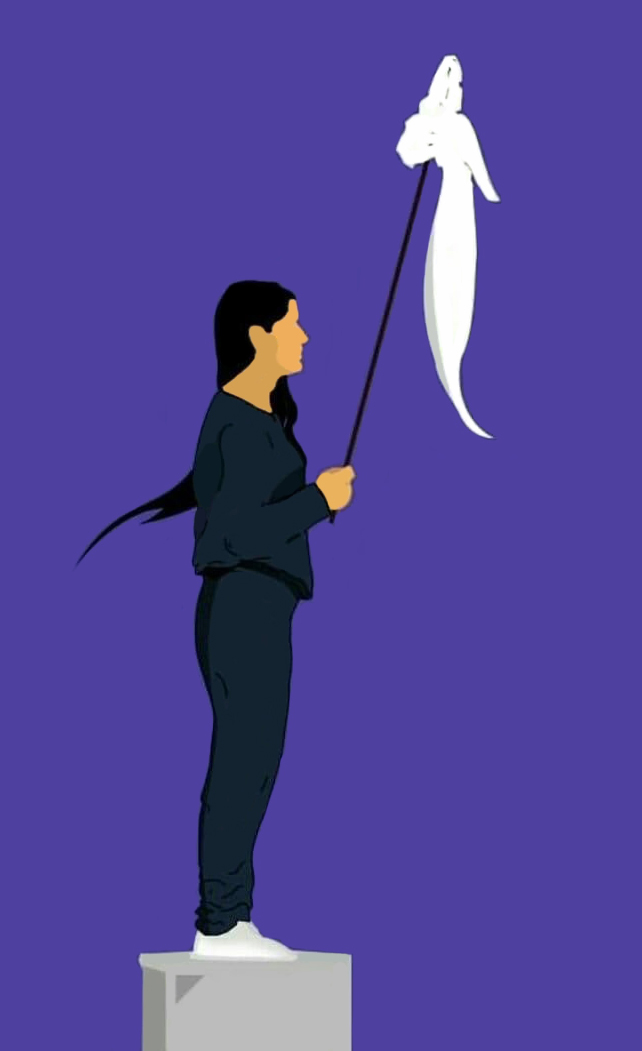Iran
A lady tour seller in the Iranian city of Yazd asked me: “Iran has complex relations with the West and strong friendship with Russians. So why do we receive so many tourists from Europe, but hardly any from Russia?”
I replied that Russians confuse Iran with Iraq.
⁂
It is commonly believed that only Americans confuse Iran and Iraq when sending their army to fight. In reality, Americans have had GPS for a long time, so they don’t really need the names of the countries.
However, in Russia, almost everyone is convinced that Iran is embroiled in war, destruction, the Islamic State, and slavery. Even my friends saw me off to Iran as if it were my last journey, almost arranging a church service.
In reality, the war and terrorist attacks occur in Iraq, while Iran is incredibly safe to the extent that you can even stroll around with a camera at night without any worries.
Iran is the former Persia. That was the country’s name until 1935, and the word itself does not come from antiquity. However, the title “prince” was never used for Persian leaders. Therefore, it is correct to refer to the computer game as “Shah of Iran” instead of “Prince of Persia.”
So, Persia is a completely independent entity that has nothing in common with Arabs or the rest of the Middle East.
Language
Many are convinced that Arabic is spoken in Iran. In reality, Arabic is only written here, while the spoken language is Persian. These are completely different languages with almost the same alphabet. It’s similar to English and French: the letters may be the same, but the languages are entirely different.
The Arabic alphabet was not always used in Iran. Initially, in Persia, they wrote in Old Persian using cuneiform script. Inscriptions from the -5th century are well-preserved on the walls of Persepolis.

Then came Middle Iranian language with its flowing script, and later in the 7th century, Persia was conquered by the Arab Caliphate, which significantly impacted Persian culture and established Islam in Iran.
In terms of language, the Arabs turned out to be nice lads. Realizing that full localization of Persia had failed, they decided to leave the Persian language in peace but transcribe it onto the Arabic alphabet. This required adding four new letters, including the letter “p,” without which boor Bersians brobably would feel no good.
The Persians quickly mastered the new alphabet and even invented their own system of letter-based drawing called Kufic script. To be honest, it was invented in Iraq, but what’s the difference, they’re all the same country. The major point is that a unique system of square calligraphy was born!
Look. Let’s take a pair of Arabic letters and imagine that we need to lay them as tiles on the floor of some palace. We can’t lay down the flowing letters because the tiles are square. But what can we do? Lay down the letters with pixels!
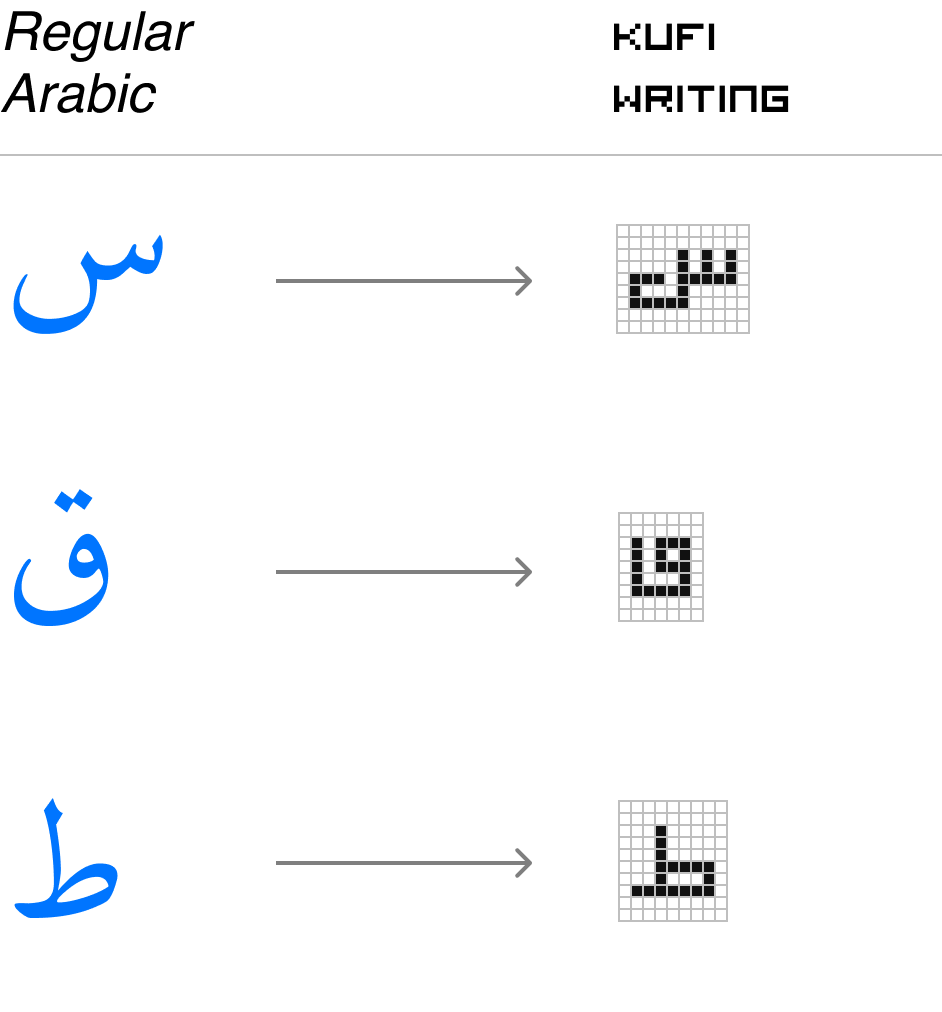
Now let’s connect the letters into words.

Then we’ll cleverly twist them somehow, making it impossible to read without a QR code scanner.
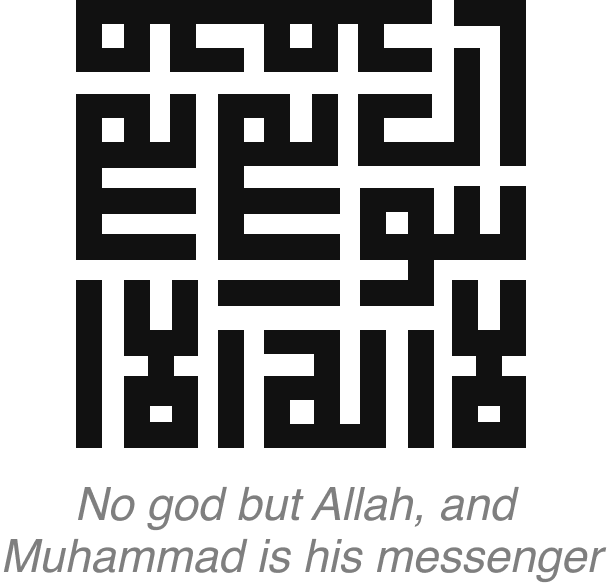
And now let’s write more words and run them along the perimeter of the mosque. Reader, take a look at the columns. Do you think it’s an ornament? Ha-ha! This is Quranic text.

It’s quite incredible that no one has thought of creating a Kufic version of Tetris.
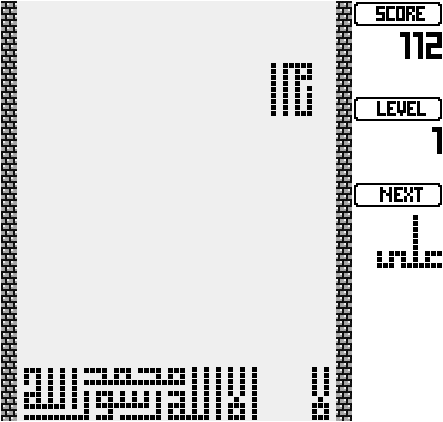
Religion and culture
Persian folklore is distinguished by a unique psychedelic touch that sets the mind ablaze even more than LSD.
For example, the legend of Simurgh. Birds embark on a search for their king, Simurgh. They overcome seven valleys: the valleys of quest, love, knowledge, detachment, unity, amazement, and annihilation. At the end of their trials, only 30 birds remain. Then they open a Persian thesaurus and discover that “simurgh” means “thirty birds,” and that they themselves, as a collective, are their own king.

This legend is used as a proverb for the concept of world government. While people search for a hidden ruler of the world, they forget that collectively they themselves are what governs the world.
Simurgh is just a small tale from the vast collection of Persian writer Ferdowsi. Reader, have you heard anything about him? Well, his epic book of kings, Shahnameh, is the largest poem in the world, surpassing Homer’s Iliad and Odyssey by twice the length.
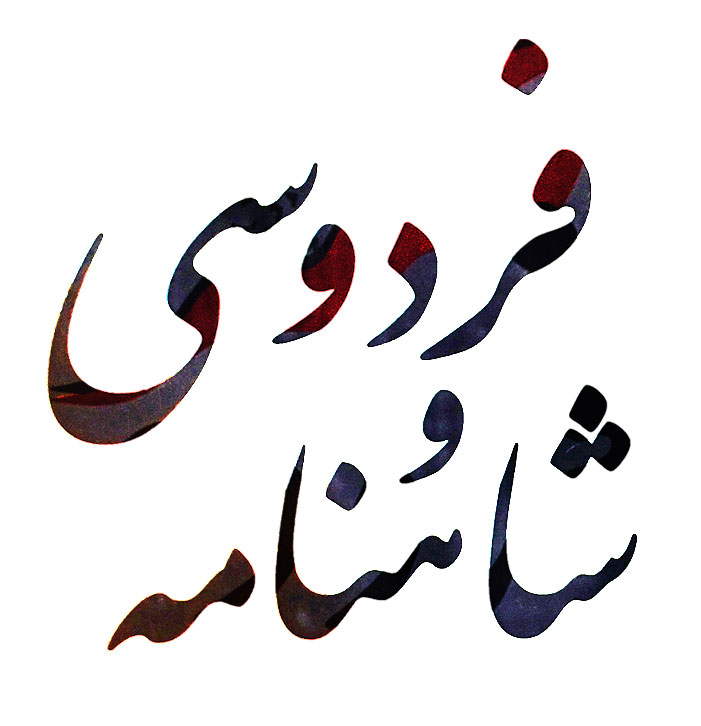
With such a powerful culture, Iran would have never become Muslim without the help of Arabs. Iran has always had its own warm and cozy religion — Zoroastrianism, with its prophet Zarathustra. A rather herbivorous religion, advocating for all that is good against all that is bad. Spirits in Zoroastrianism were depicted as a man with wings, and even God had a name and a surname — Ahura Mazda.
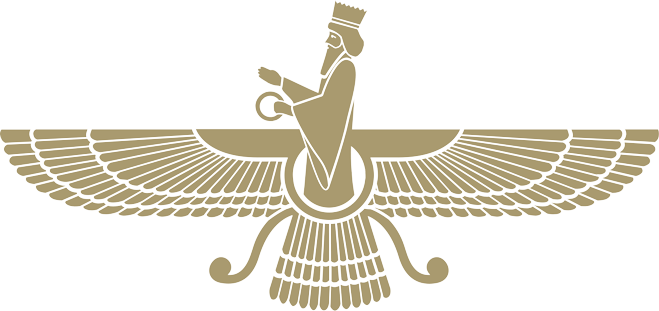
Iran remains psychologically unique to some extent even now. For instance, instead of saying “thank you,” Iranians seriously say the French word “merci.”
In Shiraz, remnants of the secular intelligentsia gather in the evenings at the tomb of the writer Saadi and recite his poetry passionately. Once, an Iranian approached me and asked where I was from. Upon learning that I was from Russia, he began enthusiastically listing Russian writers: Pushkin, Dostoevsky, Tolstoy. In response, all I could stutter was, “Uh... Saadi?” — he waved his hand dismissively at me.
Iran is indeed very cultured. The clergy no longer suppresses Persian culture as strongly as it did in the early years of the Islamic revolution. When the revolution sought to completely destroy the old Persian world, even mentioning the name of Ferdowsi was forbidden. Now streets are named in his honor.
On the other hand, the light version of Islam adopted in Iran allows for the depiction of humans and animals. Therefore, we have a rich Persian painting tradition, unlike in Arabian countries where even mannequins in boutiques are headless.
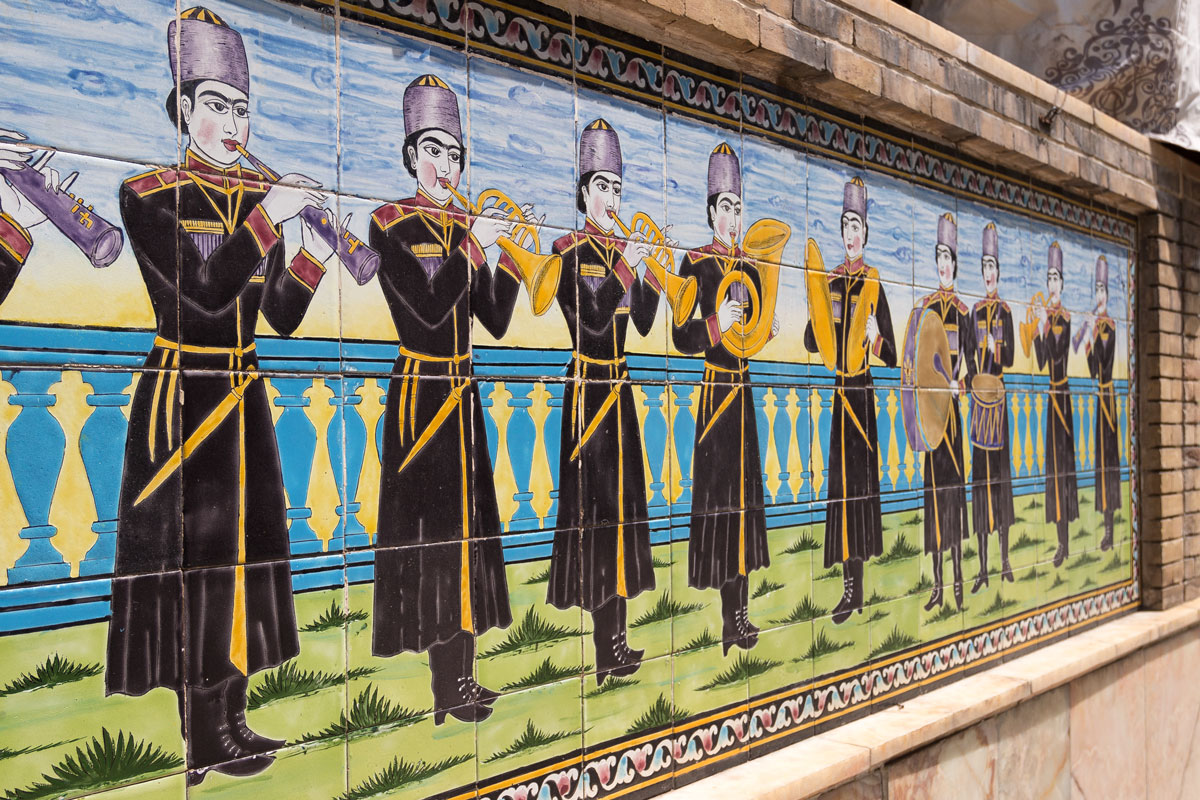
In contrast to Saudi Arabia and similar countries, theaters are allowed in Iran. Sculpture, such as the one on this theater façade, is simply impossible in Arab countries — it is akin to pornography.
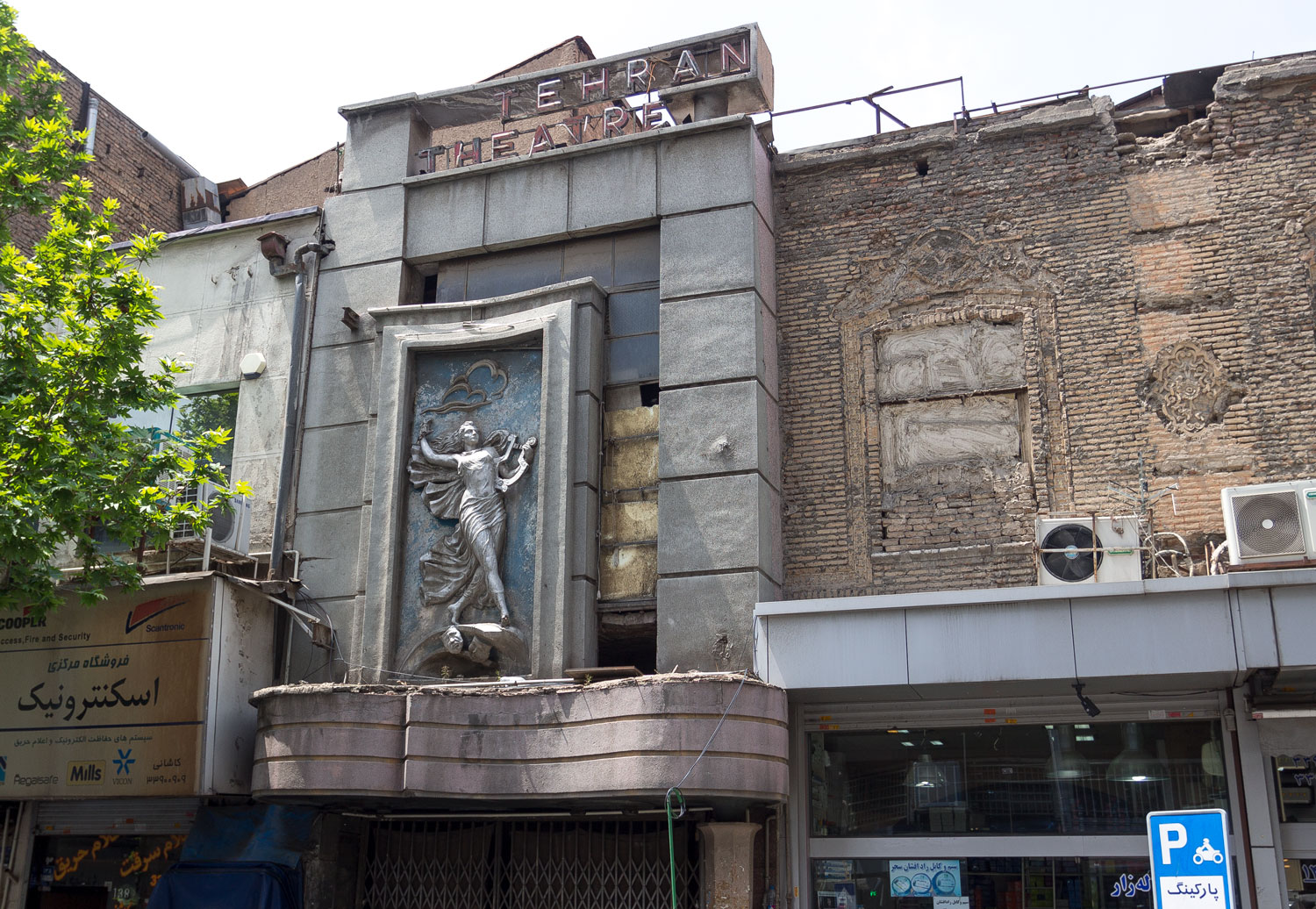
Persia allows for shared entertainment such as football and cinema. However, in Saudi Arabia, watching any films is only permitted at home. In Iran, all foreign films are subject to censorship.
Fortunately, Iranian cinema is stunning. Here, almost every film is made in the rare genre of “mockumentary.” The latest masterpiece by the leader of Persian cinema, Mani Haghighi, titled “A Dragon Arrives!,” can be compared to Fellini’s works. Yes, the plot is too strange to comprehend, but everything else in the film is impeccable.
So what, can you compare this country to Iraq?
In general, when the Arabs came to conquer Persia, there was much to amaze them. They read about the Simurgh. They prayed to Zarathustra. They watched Iranian detective movies. And they said, “No, guys. Here’s Muhammad, here’s Allah. Figure it out yourselves from here.”
And indeed, the Persians figured it out themselves to embrace Shiite Islam instead of the standard Sunni Islam.
Briefly speaking about Shiite Islam, it can be summarized as follows. Muslims have a crucial phrase with which they affirm their faith: “I bear witness that there is no god but Allah, and Muhammad is His messenger.” It is called the Shahada. However, Shiites add to it: “And Ali is also a friend of Allah.”
It seems that in one paragraph, I have expressed the very essence of the international relations between Iran and Saudi Arabia.
Why Hitler all of a sudden?
Modern Iranian history began in 1935 when Hitler properly schmoozed the Persian Shah named Reza Pahlavi and declared Persians as direct descendants of Aryans.
Indeed, it was then that Persia was renamed to Iran. This change did not happen without reason. The word “Iran” derives from the Sanskrit term “Arya.” Therefore, “Iran” literally means “Land of Aryans.” Well, a heaven-born idea!
The Third Reich fluttered Iran for a long time. They declared them Aryans, engaged in trade, and sent diplomats. The Nazi propaganda machine even went as far as proclaiming Hitler as the twelfth Imam Mahdi, whom Muslims, especially Shiites, believe in as the awaited savior. They claimed that Hitler was born with a green galloon, is a direct descendant of the Prophet Muhammad, and his name was actually “Gheydar.”
From the most intriguing aspect, Werner von Schulenburg, the ambassador of the Third Reich to the USSR, at one point worked as a diplomat in Iran and greatly enjoyed visiting the ruins of the ancient city of Persepolis.

So now, on the entrance columns in Persepolis, which have been preserved since the 5th century BCE, there is an engraved inscription: “Graf Shulya was here.”

In general, although Persia was only flirting with Hitler and the Shah had no intention of joining the war, it’s not surprising that in 1941 the USSR and Great Britain occupied Iran and overthrew Reza Pahlavi. And established his son. Believe it or not, but also Reza Pahlavi.
Well, this is it, the Persian psychedelia!
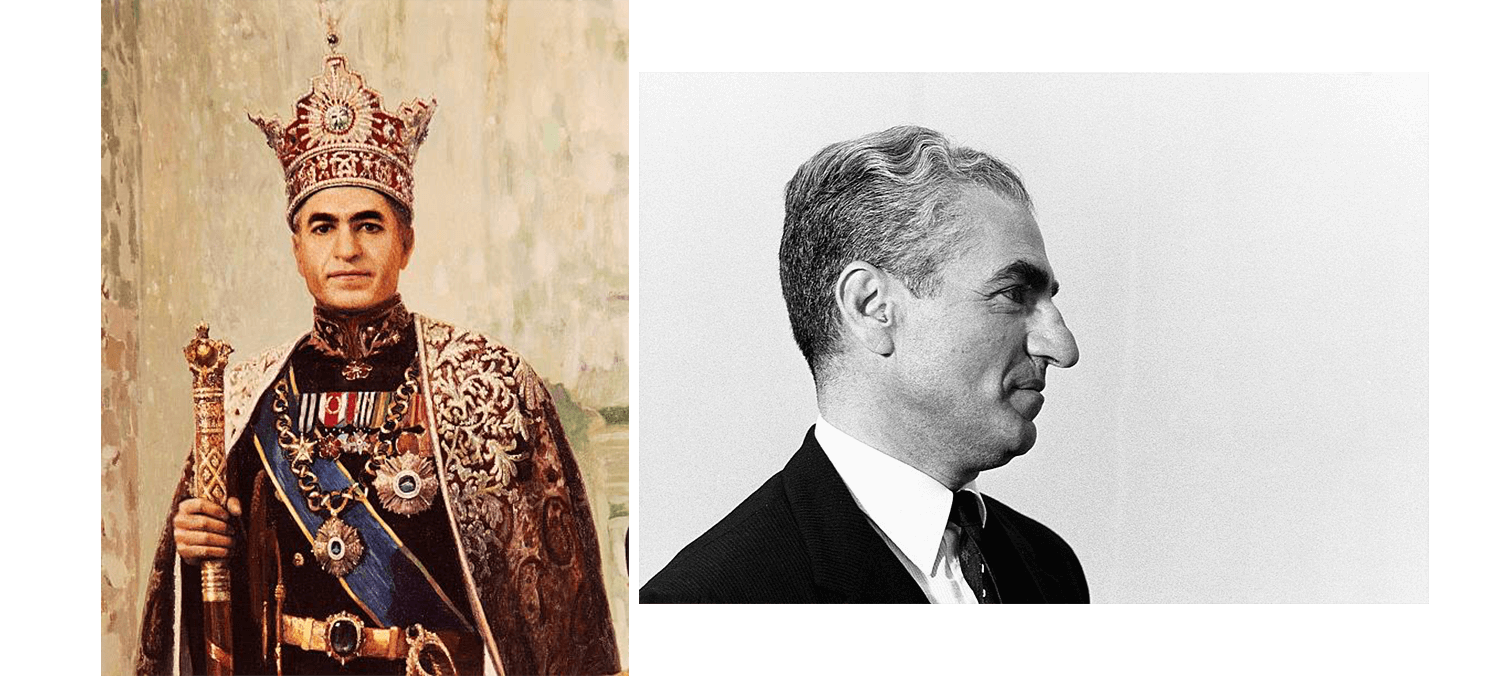
Throughout the rest of World War II, a quarter of all the equipment, supplies, and ammunition delivered to the USSR via the lend-lease program from the United States passed through Iran. It’s not surprising that the famous conference with Stalin, Roosevelt, and Churchill took place in Tehran.

Even now, in the flea markets of Tehran, you can find a variety of Soviet and Nazi symbols: from orders with swastikas to Soviet badges.
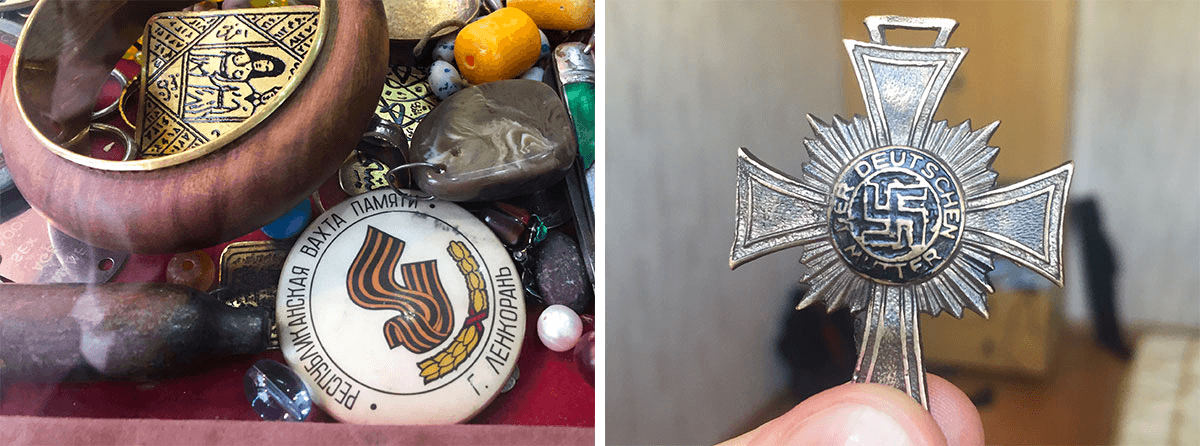
Pahlavi
Under Pahlavi, people lived so good.
There are many similarities between Iran and Russia. The Pahlavi dynasty was Iran’s version of Tsar Nicholas II. Under the Shah, Iran was a warm monarchy and had friendly relations with the civilized world: Britain, the United States, and even Israel. It traded oil, expanded its navy and army, and intervened in various conflicts in neighboring countries. With the help of the SAVAK intelligence agency, ruthlessly punished and imprisoned all those who disagreed with the Shah’s policies. In general, engaged in typical imperial activities.
Despite its imperial nature, Iran had a rather secular lifestyle. Pahlavi II systematically moved the country towards the West. Many have seen the famous “before” and “after” photographs of the Islamic Revolution, where Persian women stroll along the beaches of Tehran in open swimsuits, while Persian men romantically walk into the sunset wearing all white and holding hands.

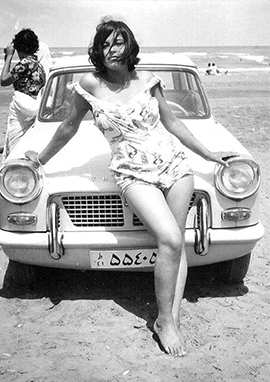
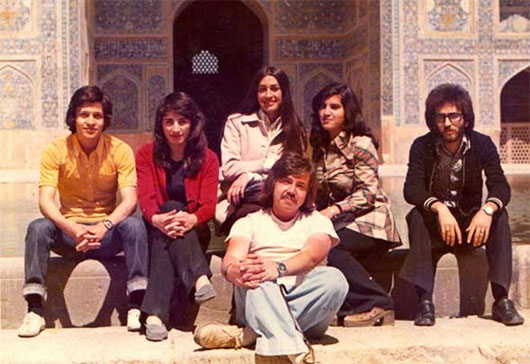
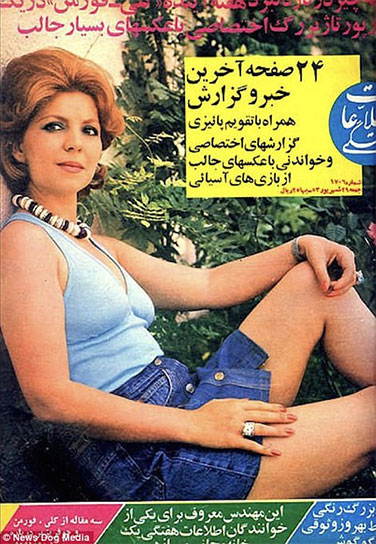
Sure, although there was such freedom in old Iran, the country remained deeply religious at heart, so it was actually only the intellectual elite who strolled along the beaches. The majority of the population willingly wore hijabs.
Furthermore, as in any normal empire, Iran faced significant issues with land and education. This periodically sparked dissatisfaction among Persian peasants, prompting Pahlavi II to initiate a series of reforms during the middle of his reign. He strictly followed the textbook of history: redistributed land to peasants, granted women proper rights, expanded industry, implemented limited privatization with workers as shareholders, and invented a clever system where graduates could choose to become teachers in rural areas instead of joining the military, for combating illiteracy. These reforms were even termed “The White Revolution,” like in a book, presumably to avoid any association with a “red” revolution.
The reforms, of course, failed. The peasants hardly received any land, while the landlords ended up screwed due to forced redistribution. The clergy became particularly angry: not only did Persian priests collect tithes from landlord estates, but now these fellows from urban schools started coming to the villages to teach all sorts of heresies instead of promoting the old good Islam.
In the end, after 15 years, it would be the marriage between the landlords and the clergy that played a decisive role in the Islamic Revolution, with the initial calls beginning just six months after the start of the reforms.
In 1963, Iranian cities witnessed a massive wave of demonstrations that Pahlavi II suppressed by force. According to official figures, the crackdown resulted in the death of 86 people. According to protesters — 15,000 people. Yeah, somewhere in that range, plus-minus.
And the hero of the day would be the arrested earlier spiritual leader and future orchestrator of the revolution — Imam Khomeini.
Khomeini
Any regime that tightens its grip will eventually face protest, and then the regime has two options: either suppress the protest and tighten its grip further or allow the protest and ease its pressure.
It’s funny how both the first and the second often lead to the collapse of a regime. If a regime increases pressure, it results in an economic decline, terrorism, repression, and often sanctions. A state cannot remain in such a condition indefinitely. Sooner or later, it will be swept away by a new wave of protest ten times stronger, which will consist not only of peaceful opposition but also of the most hardened and brutal groups that have experienced terror and deprivation and are ready to respond in kind. This is how terrorism is born.
However, if the regime reduces its pressure, the second wave comes even faster: society still remembers its excesses but is no longer afraid.
When a new wave of protest rises, few governments can escape it. In countries governed by a parliament and president, the top officials can be reelected and start over. However, we are dealing with a regime where there is no electoral process, and the government functions as a royal court or an interest group. Such states can only be saved from revolution by a strong foundation. It could be religion, as in the case of Saudi Arabia, or ideology, as in the case of China.
Iran had neither.
Under Pahlavi II, the opposition was always treated cruelly. Protests were suppressed in 1963, and Imam Khomeini was also expelled from the country.
They continued tightening the screws until they tightened them to such an extent that the US administration hinted to the Shah that he could lose friendship. Then, in 1977, the regime’s pressure was eased. Subsequently, the revolution developed rapidly.
In January 1978, students from the holy city of Qom took to the streets to protest against the defamation of Imam Khomeini, where they were ruthlessly peppered with lead by the Iranian police.
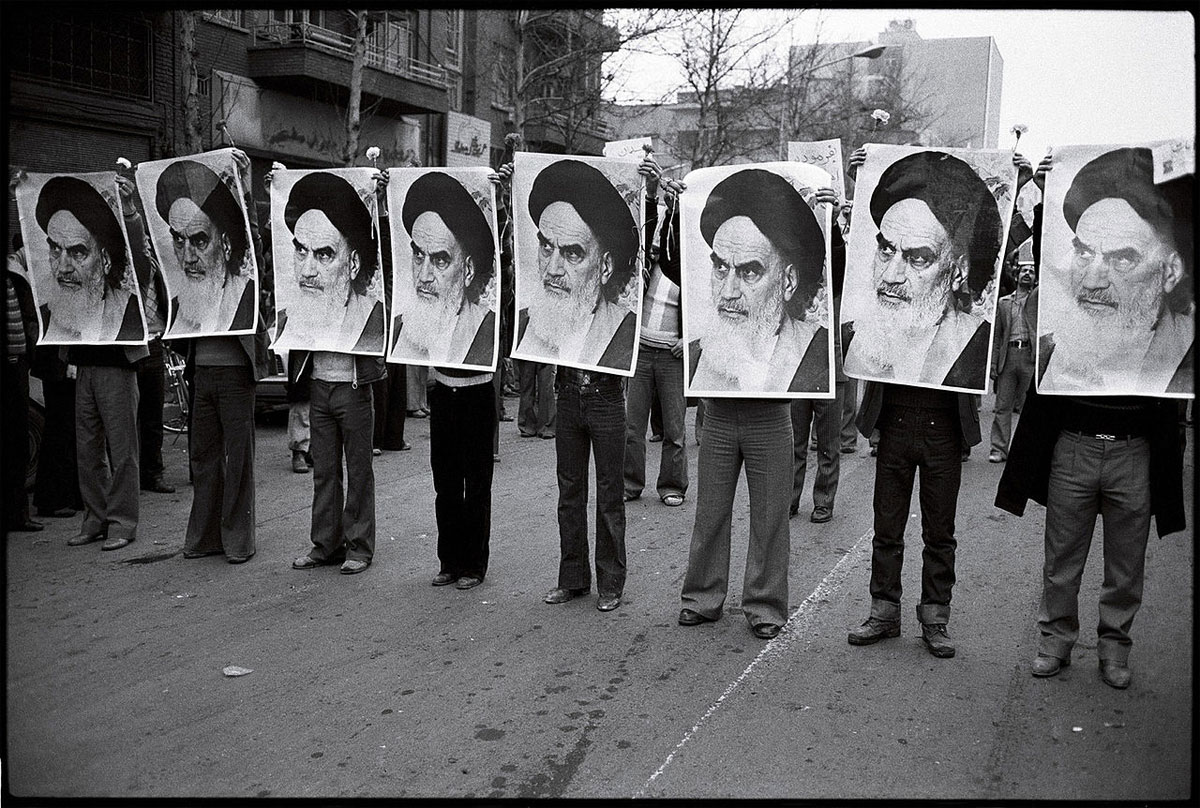
Mourning ceremonies began for the students, which in Shia Islam last for 40 days, similar to the Orthodox tradition. When the fortieth deathday ended, the mourners, after sipping Zamzam water and snacking kebabs, once again took to the streets to protest against the protests. And once again got their asses kicked. The cycle of forty-day mourning started anew. When the next fortieth deathday approached, those mourning of the mourners filled the streets for the third time, protesting against the protests against the protests. And what happened next? Correct! Got the shit out again.
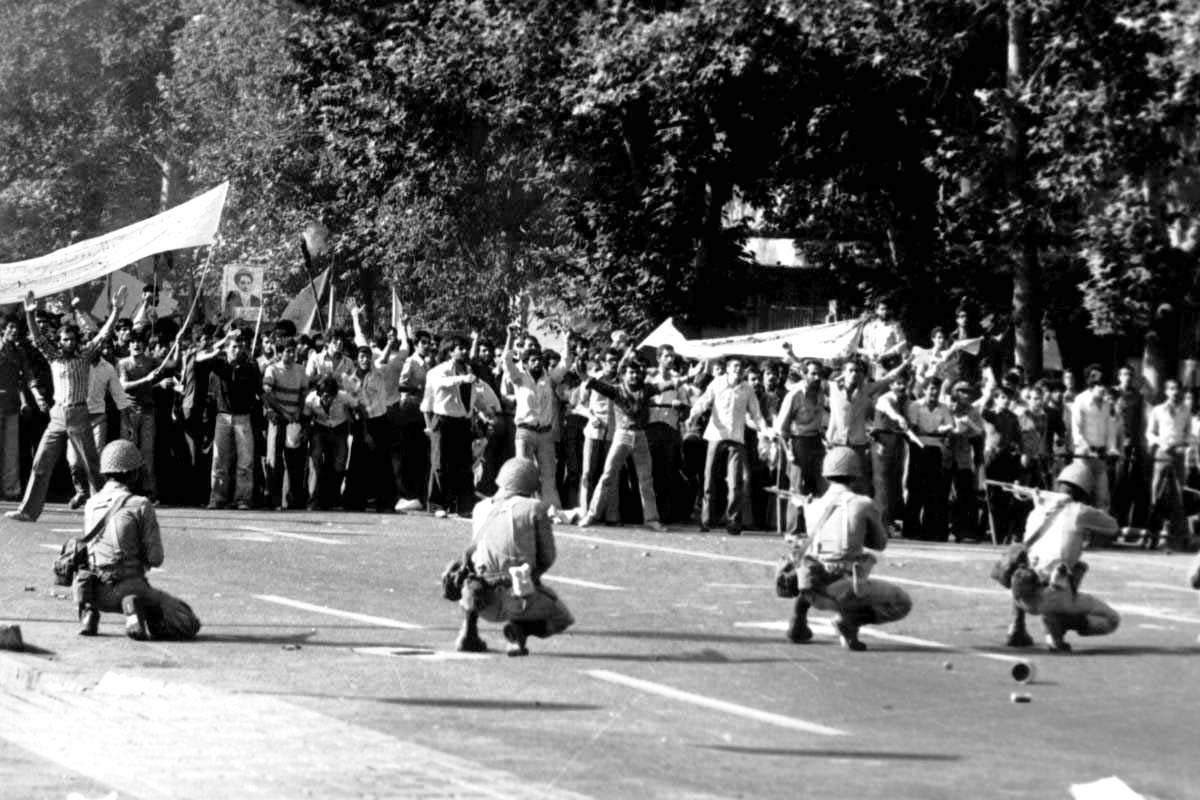
Shortly, Iran, true to its psychedelic cultural code like never before, entered a 40-day mourning cycle that lasted almost a year. If Persian carpets were traded on the stock exchange, traders would have shat their pants of happines: it’s a completely predictable, repetitive bubble exactly 40 days long!
By the end of the year, due to constant strikes and protests, the Iranian economy was paralyzed. Oil prices tripled. Pahlavi II declared state of war, but it was already too late — the regime’s end was near.
Three groups were fighting for the future of the country: supporters of the constitution, Islamists, and Marxists. Communist ideas enjoyed significant support in pre-revolutionary Iran, especially among the intelligentsia. Therefore, many were already willing to overthrow the Shah’s regime and begin building a bright future.
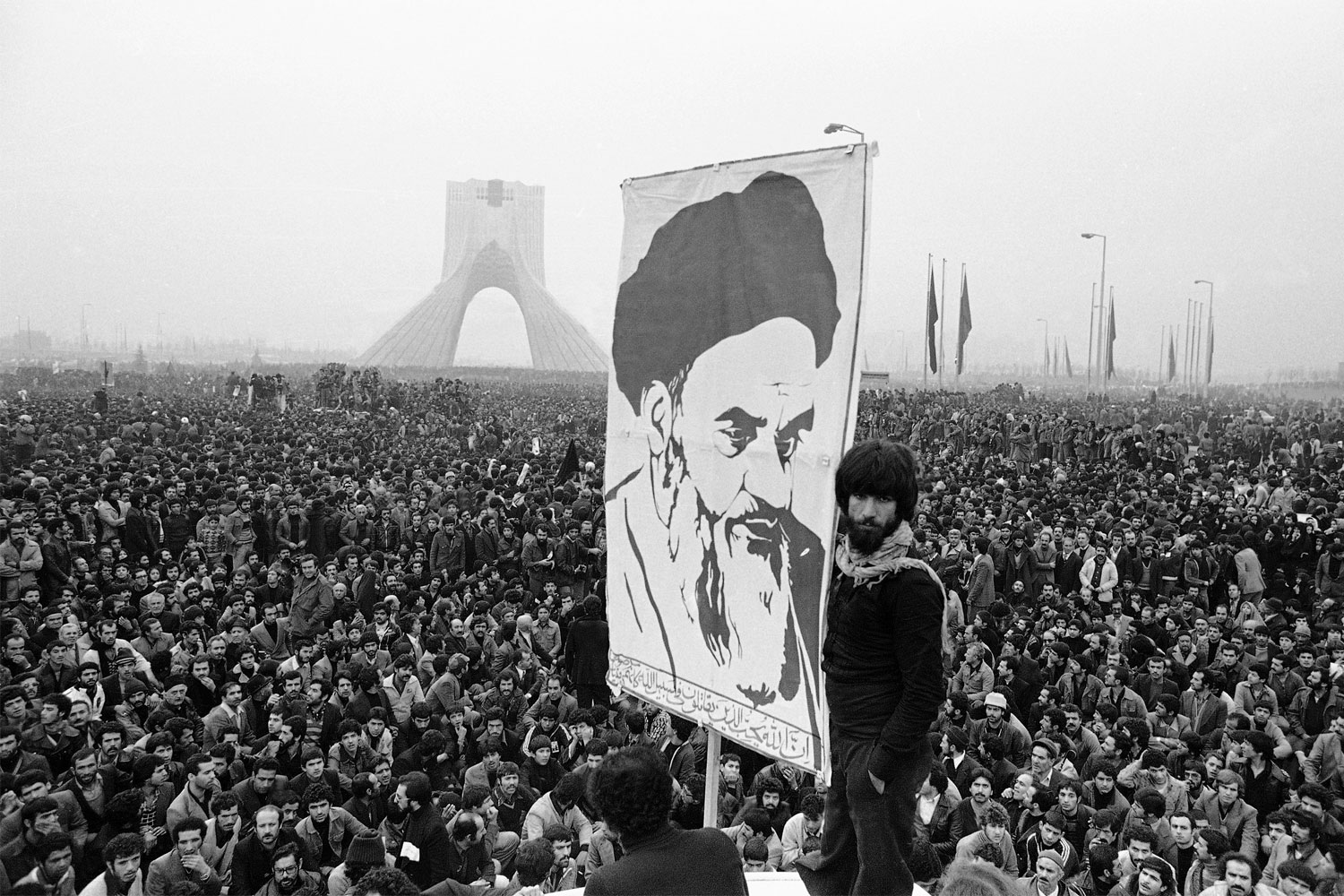
The people’s aspirations were fulfilled in February 1979 when Imam Khomeini returned to Tehran from the French city of Paris on a sealed airplane. Returned, and proclaimed to a crowd of three million people that the revolution, which the Bolsheviks had been talking about as necessary, has not been approved.
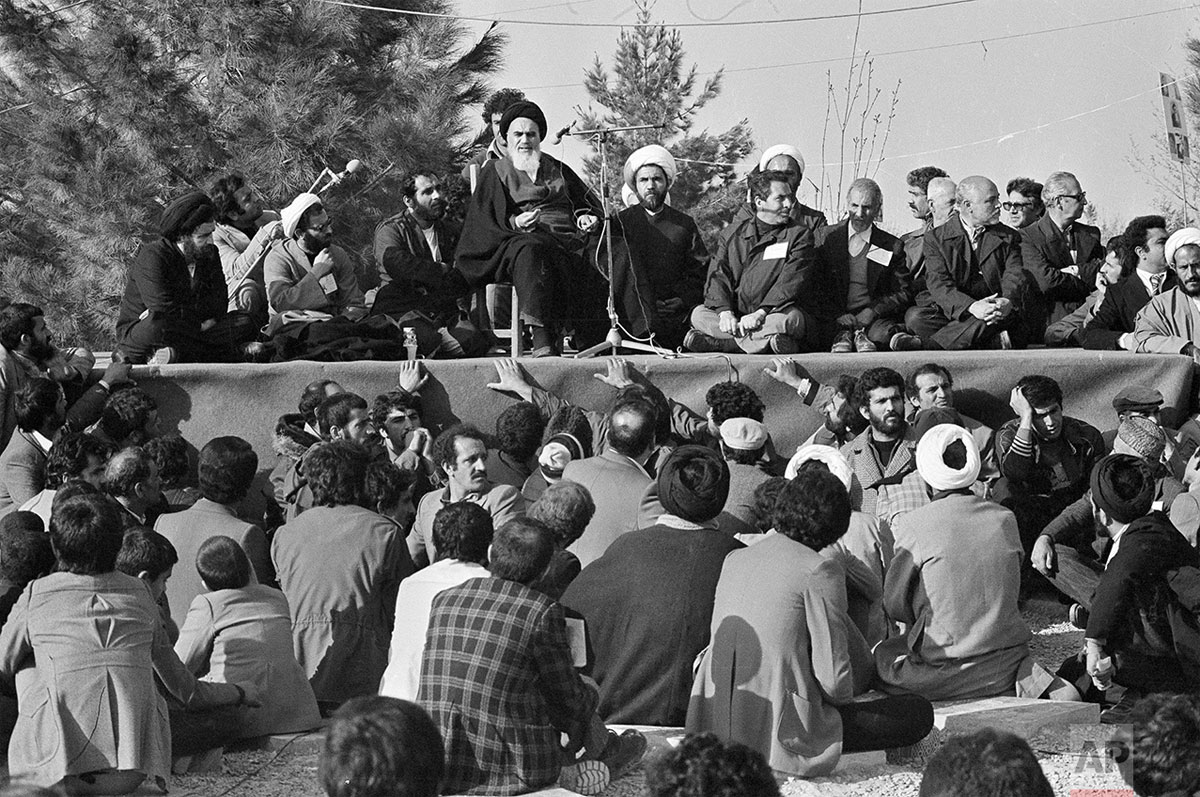
And wrung the neck of the Shah’s regime first, and of the communists second, declaring the “special, Islamic path of social development.”
Pahlavi II fled to New York in women’s dress. The United States accepted him, but refused to save the regime: he had shot too many people.
Seizure of the American embassy
Bad idea, because Khomeini’s “special path” quickly unfolded into brutal purges of such magnitude that many yearned to return everything to how it was right in the first year of the revolution.
It unexpectedly turned out that the revolution was... Islamic! No one knew when they supported an imam. Therefore, the first thing Khomeini did was to wrap all women in lavash hijab and introduce Sharia law in the country.
Then began the fight with everything Western. The sale and viewing of foreign movies and literature was prohibited. The media: newspapers, television, radio — were disbanded, content and programs were carefully purged and redesigned to promote the Islamic way of life.
After the Islamic Revolutionary Guards dealt with clothing and television, they went to schools and institutes. Khomeini referred to universities as “centers of debauchery breeding communists” and a “gathering of people in the service of imperialists.” Teachers and scholars began to be expelled from universities, arrested, and repressed. Almost 400 professors were expelled from the main University of Tehran, accusing them of collaborating with the Pahlavi regime. Around 20,000 students were pushed out. All of this, of course, escalated into street clashes. According to various estimates, the number of casualties ranged from 5 to several thousand people. Plus or minus, in short.
The educational curriculum in schools and universities began to be reshaped around Islam and military affairs. All history textbooks were reissued, with almost everything except Iranian history being removed. Muslim law became the analogue of dialectical materialism, and the Quran became the analogue of Capital. Ayatollah Khomeini became a symbol of the fight against czarism and imperialism, and his image began to be displayed everywhere where there were hooks.
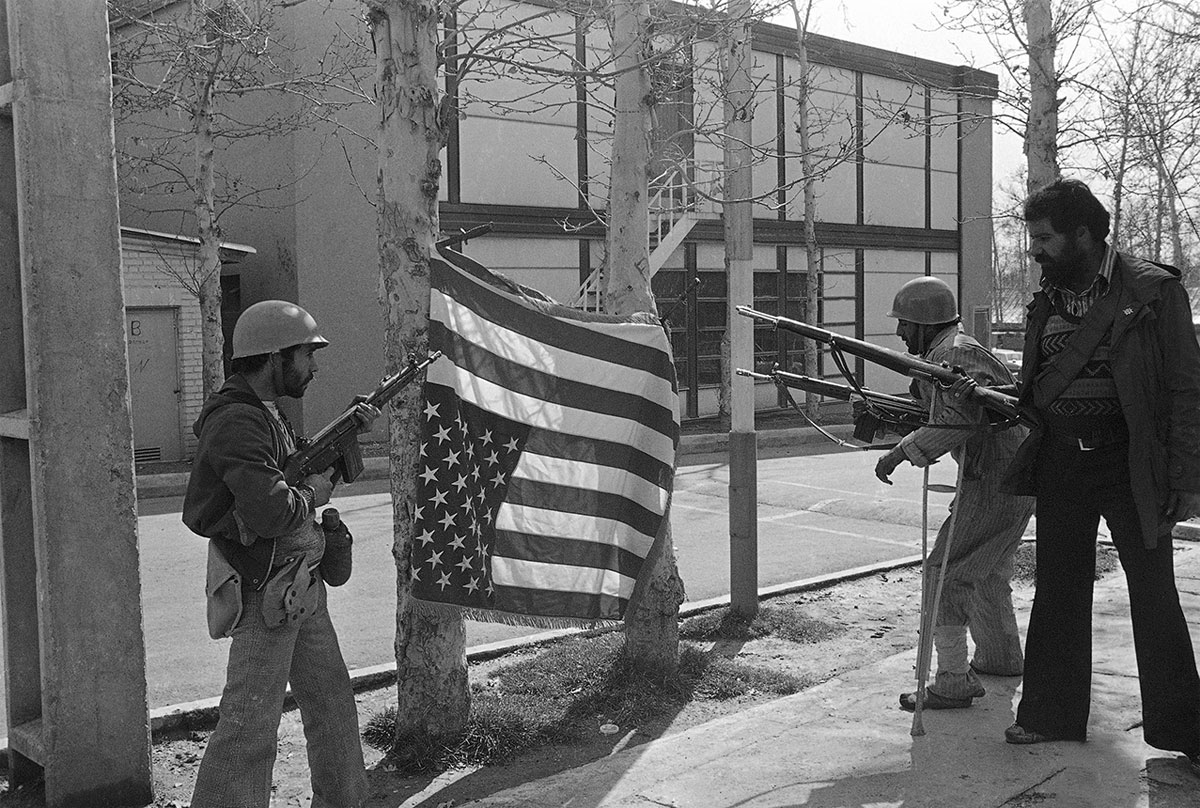
The raisin of the entire revolution was the capture of the American embassy. Here, the Khomeini regime revealed its terrorist nature. Many revolutions took place in the world where they fought against Americans. But only Iran resorted to open terrorism.
In November 1979, a crowd stormed the US consulate in Tehran and turned everything upside down: all confidential documents, passport and visa stations, safes, and closed rooms were broken into and seized.
66 people were taken hostage. Of them, 13 individuals were freed after a couple of weeks, while the remaining 52 people were released only after 444 days, i. e. in one and a half years!
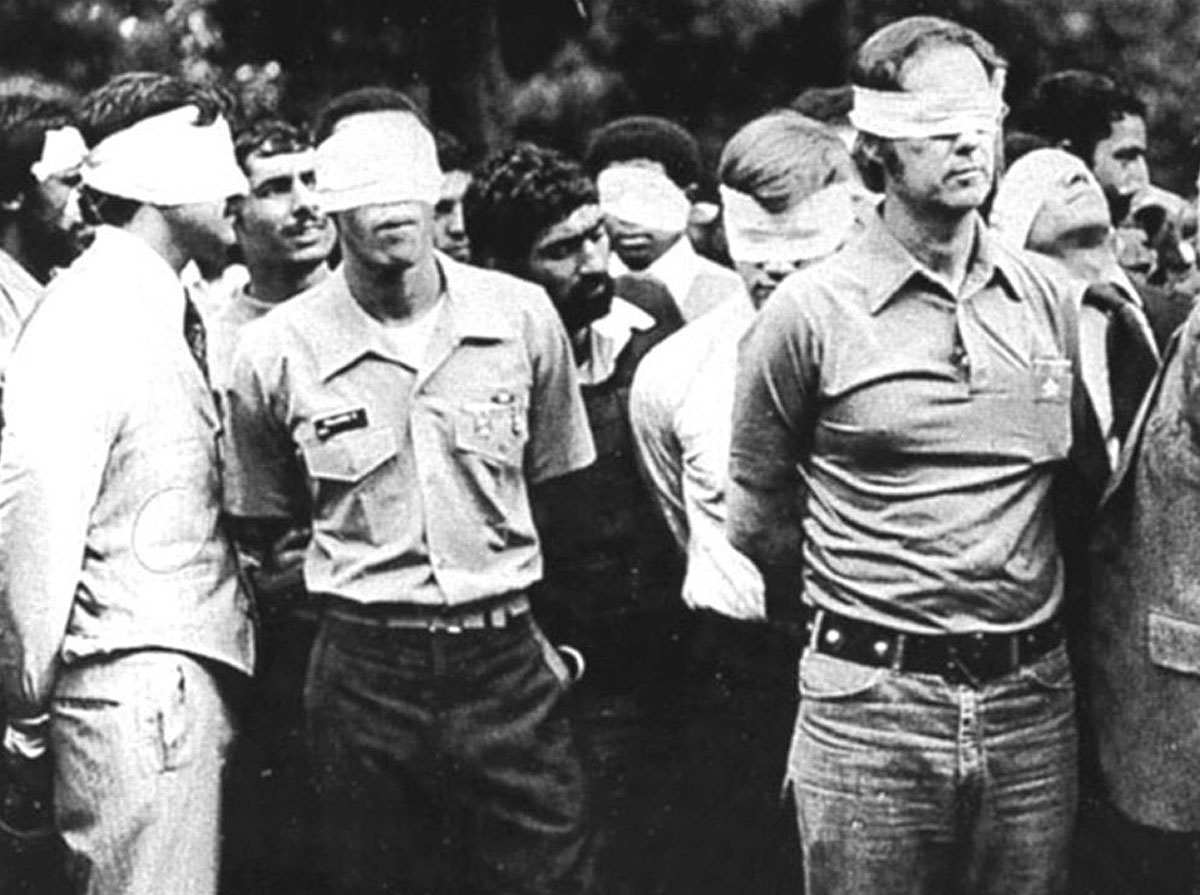
The world has witnessed many revolutions, which often involved acts of terror. However, there had never been anything on the scale of seizing a US embassy before. There can only be one definition for it: terrorism. It is the same kind of terrorism that occurs during the seizure of a theater or an airplane. By seizing the embassy, Khomeini clearly and unequivocally demonstrated to the world what his “special path” represented.
The former embassy still stands in Tehran to this day, transformed into a museum. The walls of the fence are covered in graffiti depicting the Statue of Liberty as a skull.

Regular exhibitions of fresh artwork take place in the courtyard. They haven’t had a chance to paint Trump yet, but Obama with Khomeini’s beard is there!

Fractured lands
The seizure of the embassy marked a point of no return in the Iranian Revolution, which triggered a chain of dramatic events in the Middle East.
We continue to witness its consequences to this day. All the Middle Eastern wars and terrorist acts, invasions and interventions — all of them, to varying degrees, are a legacy of that powerful explosion that occurred in Iran many years ago. The war in Iraq, Syria, Al-Qaeda, and ISIS — to some extent, they are just chapters in the book of history, which Iran began to write.
When the revolution in Iran took place, also began its export to neighboring countries. Just as Lenin tried to ignite the flames of a global communist revolution, Khomeini attempted to overturn the entire Arab world.
These events affected the entire Middle East. In Bahrain, several imams were sent who spent two months preaching and calling for the country to join Iran. In Saudi Arabia, local Shiite groups organized demonstrations and called for overthrowing the king. In Kuwait, a relative of Khomeini formed the organization “Arab Revolutionary Brigades,” which spread the ideas of Islamic socialism.
The export of the revolution failed. Protests in all countries were suppressed, and foreign agents were sent back to Iran. However, it was these provocations that led to the self-isolation of Arab countries and the development of terrorism.
The most vivid example is the monstrous regime that was imposed in Saudi Arabia and is only now beginning to decline. It was merely a fearful and anxious reaction to the Iranian Revolution.
But the climax of the revolutionary arsons was the Iran-Iraq War.
Here, the reader who confused Iran and Iraq at the beginning of the story should have his mind blown: what-what war?
The war was indeed paradoxical. Neither country gained anything from it: not an inch of land, nor favorable conditions. Iran believes that Iraq started the war and Iran won it. Iraq believes that Iran started the war and Iraq won it.
Actually, it was Iraq who started the war. And it began in response to an assassination attempt on its Prime Minister. The objective of the war was declared as the overthrow of the Iranian revolution and the chaos it generated. By that time, Khomeini had already executed several Shah’s generals, so Iraq believed it would be an easy prey.
And the leader of Iraq at that time was Saddam Hussein. That’s the drama!
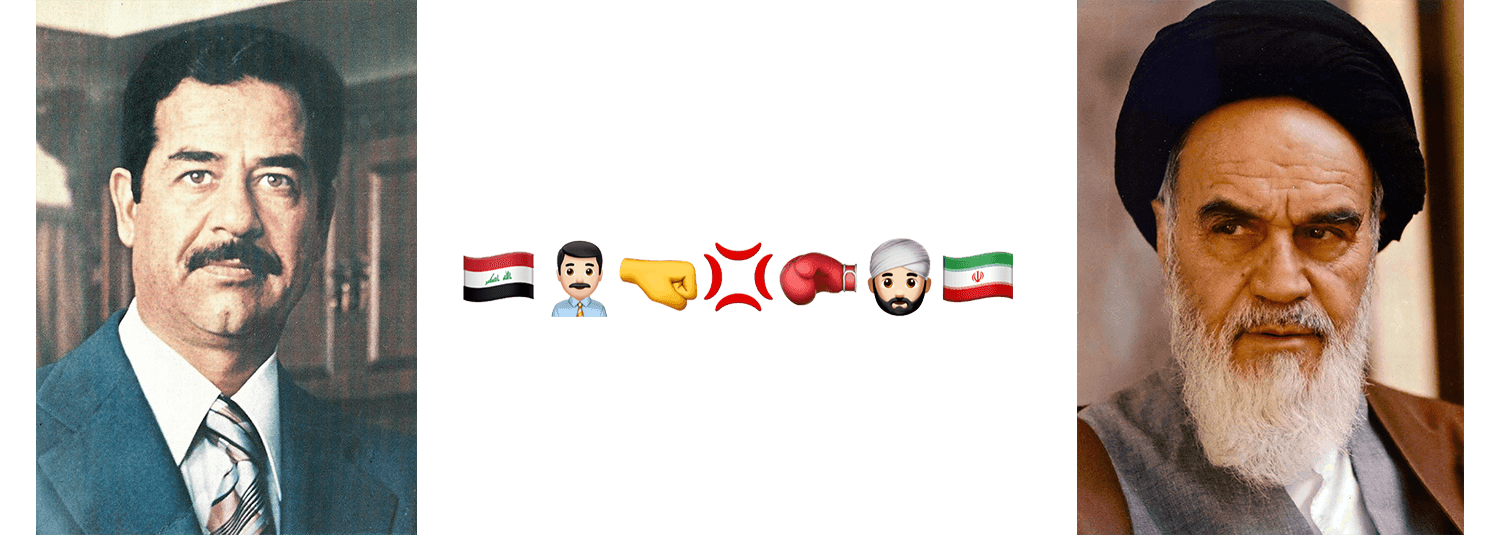
Hussein was already no bargain, but compared to Khomeini, who openly engaged in terrorism against the USA, he was just a sweetheart. That’s why America decided to support Saddam Hussein in the war, and that’s where their long “friendship” began.
So much has been said against the USA because of this support! It is still believed that America is the main sponsor of terrorism in the Middle East. In reality, all this “sponsorship” boils down to choosing one maniac to deal with another.
The war ended after 8 years and almost immediately transitioned into another one. In 1990, Hussein invaded the small state of Kuwait. He did so because Iraq’s economy was exhausted from the war with Iran and had accumulated massive debts.
Later, this invasion will be called the Gulf War. The Americans will initiate Operation Desert Storm, drive Saddam out of Kuwait, and enter Iraq. They will continue supporting Hussein as they still need him as a counterbalance to Iran. After 10 years, in a new campaign, America will finally overthrow Saddam’s regime as part of the fight against terrorism.
From there, it will be just a walking distance from the contemporary events described in Scott Anderson’s monumental article Fractured Lands: How the Arab World Came Apart.”
The country
Today, Iran is a charming Eastern country for travelers.
Iran is not a desert at all, and there is no Arabian heat here. The climate is pleasant and mild, resembling Europe. Cities are immersed in greenery, and snowfall is common during winter.
Transportation in Iran is well developed. Tehran has a wonderful metro with 120 stations, the only downside being navigation. There are “Luxury” buses that operate between cities. The ticket costs only 10 dollars for a business-class seat with ample legroom.

Persians are not Arabs, and moreover, they despise Arabs. Along with that, they dislike all Arab habits. Iran is therefore wonderful for travelers: you will never be deceived, taxi drivers won’t try to overcharge you, and merchants won’t inflate prices. If you engage in bargaining at the bazaar, chances are you won’t be understood. If you get lost in the city, you will be guided to your hotel without being asked for money. Persian hospitality is genuine, unlike Arab hospitality, which can be deceitful.
Iranians even speak melodically and calmly, gesture gracefully, and their overall demeanor shows intelligence. Unlike Arab countries, women in Iran are relatively free: they smile, do not cover their eyes, engage in conversations on the streets, and work in cafes. The only requirement is that everyone must wear a headscarf.

There is a special attitude towards Russians in Iran.
For Russia, Iran is currently the only strong ally in the Middle East. For Iran, Russia is the only supporter in their complex political campaign. Russia and Iran jointly defend the regime of Bashar al-Assad in Syria, seek to influence the fate of Kurdistan, collaborate on nuclear programs, and plan to counter the United States together.
Every time I confessed that I was from Russia, Iranians would instantly change their expression and almost throw themselves into hugs. The former American embassy was already closing, but they kept it open specifically for me – so that I could witness how, in their words, “our common enemy” was humiliated. Finally, when I took a shared taxi, they charged me “whatever it was,” without even bothering to count the coins.
But the most astonishing incident occurred at a small hotel in Tehran. I had already paid the full price for the room to the landlady and went to rest. As I was leaving the street, I was called out by, presumably, her husband — a thin, skinny man with typical Persian mustaches and a worn-out face.
“Hey, you! Stop.”
“Huh? What happened? I’ve already paid, I’m going for a walk.”
“Come back. Are you Rus?”
“Hmm, yes. Rus.”
“Rus? Russia? Come here. Take this.”
The man beckoned me to the counter, opened a drawer with a key, took out some money, and returned it to me. Approximately 10% of the price. He patted my shoulder, shook my hand, said something like: Putin, Vodka, Bashar Assad — and let me go.
The funniest thing was that in the evening, the same man knocked on my room door and with a bewildered expression, gestured to explain that the money he gave me in the morning needed to be returned. Judging by the look in his eyes, he had received a strong scolding from his wife, and he was very embarrassed.
Perhaps it was a manifestation of “taarof” — the Iranian system of politeness. It’s a game where one person endlessly offers something, while the other person endlessly refuses.
A rotten apple in Iran is the hole-toilet. Proper toilets are only found in expensive hotels. Even at an international airport, one has to use a hole in the floor. This nonsense contrasts with the charm of the country. Apparently, Imam Khomeini banned European-style toilets as a symbol of imperialism. There is no other explanation.

Persian Thermidor
The biggest problem in Iran is sanctions.
Iran has been under harsh economic sanctions for 40 years. After Iran stormed the American embassy and began spreading its revolution throughout the Middle East, the US couldn’t help responding by completely prohibiting any interaction with the country. Banks, credit, trade, oil, and gas — Iran was cut off from the rest of the world.
Sanctions have been unsuccessfully attempted to be lifted for many years, resulting in Iran being allowed to purchase medicines and sell carpets. Not much for a superpower.
Therefore, in 2005, Iran’s president became the well-known kebab enthusiast Mahmoud Ahmadinejad, who gained fame for denying the Holocaust and calling for the destruction of Israel. Politically inclined readers may recognize him from an image in the music video for “Capital” by Lyapis Trubetskoy.
So, this Ahmadinejad decided to play right from jocker and develop nuclear weapons.
The reader might be wondering: how can these savages create a whole nuclear bomb? Where do they get scientists, technology, and knowledge from? Well, it’s quite simple, reader!
When Khomeini calmed down a bit with the purges at Tehran University, intelligent people hinted that scientists could indeed be useful for developing something-of-that-nature.
Just like how Stalin suddenly discovered that Korolev was in the Gulag, Khomeini discovered his own dark genius — Professor Hesabi, who is now considered the father of Iranian physics and was a student of none other than Albert Einstein himself.

And it turned out that the blueprints of the atomic bomb had long been leaked online by pirates, along with the source code of Windows, and all the components could be purchased at the flea market in Pakistan.
In short, this all started a serious panic. The USA imposed new sanctions, prohibiting any relations with Iran even stronger. Then a series of attempts on Iranian physicists began. The number of casualties ranged from 1 person to 100 million, with estimates as always being imprecise, plus-minus.
The climax of the story came in 2010 when Kaspersky Lab discovered the computer virus Stuxnet, which targeted Siemens systems used in Iran’s nuclear facilities.
The virus turned out to be monstrously well-designed, and certain parts of its code contained hints that left no doubt among most experts and the media about its origin: it is believed that its creators were the intelligence agencies of the United States and Israel, with Iran being the target.
Stuxnet became the first virus in history that caused such extensive and, most importantly, physical destruction of infrastructure. It disabled at least 25% of the centrifuges at one of Iran’s nuclear plants. The actual extent of the damage remains undisclosed. But the simple fact is that Iran’s nuclear program was destroyed, leading the country to agree to the presence of international observers.
And since then, Kaspersky is very strongly disliked in the United States, most likely for a reason. However, this is a completely different story.
Currently, Iran is still under sanctions. The country’s banking system is completely disconnected from the international Swift system, so cards from any European banks do not work in Iran. It is impossible to withdraw money or receive transfers through Western Union in Iran by any means. The only option is to bring cash dollars and exchange them on-site.
The only exception is made for carpets. Persian carpets are incredibly cool and so expensive that even a severely carpet-crazy person wouldn’t go to the market with a suitcase full of money. Therefore, Iranians have agreed to conduct payments through Dubai. Carpet shops are the only places in Iran where the proud VISA/MASTERCARD label can be found.

In general, all these sanctions with the ayatollahs have been deeply frustrating for Iranians for a very long time, and with each passing year, the protest against the revolution grows stronger. Not only carpet traders, but also many others desire to accept payment via Visa from wealthy tourists.
Therefore, when our nuclear friend Ahmadinejad was re-elected for a second term, it greatly displeased everyone. They had expected the sanctions to be lifted soon, but instead, they received even more kicks.
Then protests erupted in the country. In 2009, several hundred thousand people took to the streets. Even former Prime Minister Musavi joined them, a sort of Persian Gorbachev advocating for perestroika.
The revolution did not happen then. Primarily because the Iranian regime relies on two firmly established pillars: harsh repression with executions and a willingness to make concessions. The Ayatollah explained that the elections were conducted fairly, implemented some reforms, banned YouTube, and imprisoned several individuals.
It didn’t solve the problem; it only postponed it. Quite recently, on the verge of 2018, protests erupted in Iran again, but this time they took on a qualitatively new form.
If in the previous protests in Iran they demanded a review of elections and reforms, without questioning the state architecture, now the protest is beginning to doubt the system itself — the very foundation of the country, the Islamic Republic.
Iranians now understand that sanctions won’t be easily lifted from them. In addition to the nuclear program, Iran has too many other sins that the West will not forgive.
Among these sins are the support for the Syrian regime led by Shiite Bashar al-Assad and the sponsorship of groups like Hezbollah and Hamas. By the way, these groups are not recognized as terrorists in Russia. Finally, there is a record-high number of executions and political prisoners, surpassing even Saudi Arabia.
While Iran supports Syria, the value of the Iranian rial has fallen threefold since 2013. Of course, this is mainly due to the fact that the country’s entire economy relies on oil.
No, Iran is not yet in dire poverty or hunger, but youth unemployment has reached 30%, and food prices are rising by 20% annually. In such conditions, especially against the backdrop of inflated military expenditures to support terrorists and Syrian dictators, it only takes a spark for the flames to ignite. And that spark ignited on the edge of the country, in the city of Mashhad. And it was ignited over a trivial matter: egg prices sharply doubled.
And suddenly it turned out that the Iranian people are fed up not only with Syria, not only with sanctions but also with all these ayatollahs and pahlavas. They have long desired a normal secular state and a European toilet instead of an Asian squat.
The fire from Mashhad quickly spread across the country. It seems that around 300,000 people took to the streets nationwide. The revolutionary Telegram channel gathered several million observers. This is fewer than in 2009. But the main thing is the slogans with which Iranians now came out.
The protest had three “against”: against the hijab, against the government, and against the war in Syria.
The protesters, for the first time, tore down posters and toppled entire billboards with portraits of Khomeini and contemporary clergy. The crowd shouted, “Death to the ayatollahs!” Such acts are severely punished in Iran, often resulting in imprisonment and harsh consequences.
A 31-year-old woman named Vida Movakhed took off her headscarf, hung it on a pole, climbed onto a transformer booth, and stood there in the middle of the crowd.
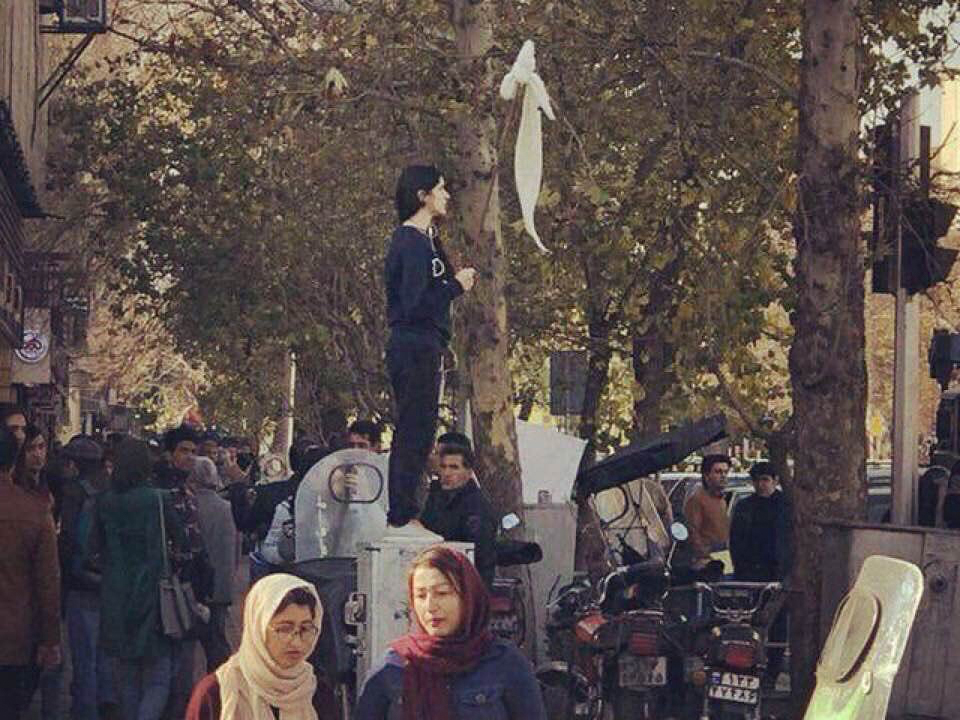
Instantly, Iranian women across the country reacted to this, and the headscarf on the pole became a symbol of resistance. It is difficult to assess the courage of such an act from a Western country. In Iran, appearing in public with an uncovered head can result in a prison sentence of 10 to 60 days or a significant fine.
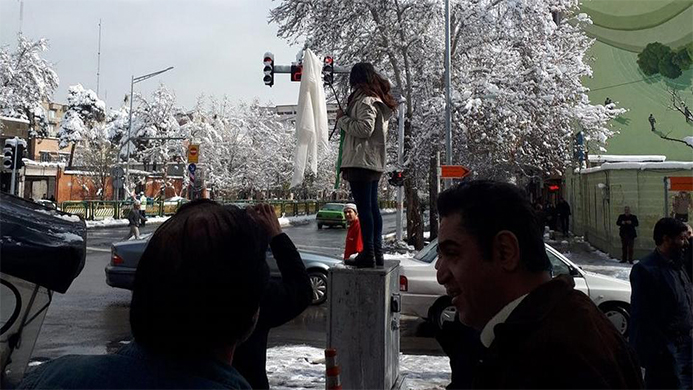
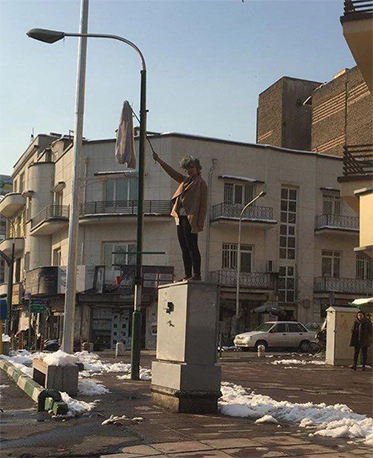
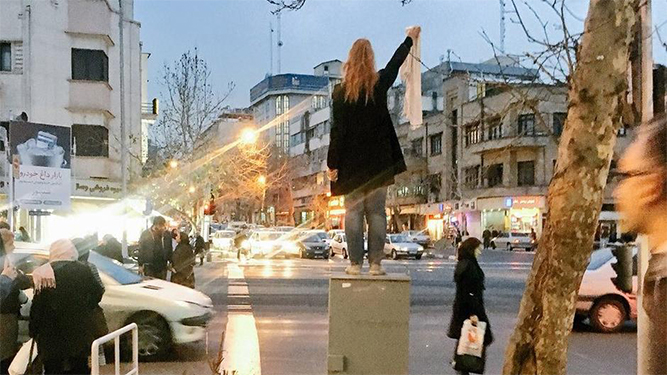
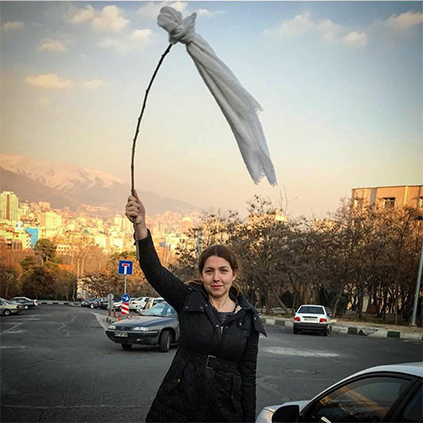
Iranian protests spread throughout the country in a matter of days, right before the New Year, and quickly came to an end. Approximately 5,000 people were arrested, and several were killed. The regime responded with unprecedented brutality.
⁂
It is difficult to say what will happen with Iran next.
On one hand, their government is resourceful and can make concessions while simultaneously suppress protests forcefully.
On the other hand, young Iranians, who have long been accustomed to the Internet and as a result have witnessed modern life in developed countries, compare the free Europe to conservative Iran, which has reached a deadlock, burdened by tiresome sanctions, bans on music and films, with headscarves and support for terrorists. Looking at this, they ask their Ayatollah: What for? And it seems that the Ayatollah has nothing more to answer.
It is difficult to say what will happen with Iran next. One thing is clear: when the Persian Thermidor occurs — and it could happen very soon — a monument to Vida Movahed will stand in the center of Tehran.
But it wouldn’t be as intriguing for us to watch what will happen with Iran if it weren’t for so many amusing coincidences with Russia — from oil and sanctions to the fight against civilization and the war in Syria. Well-well, interesting :-)


